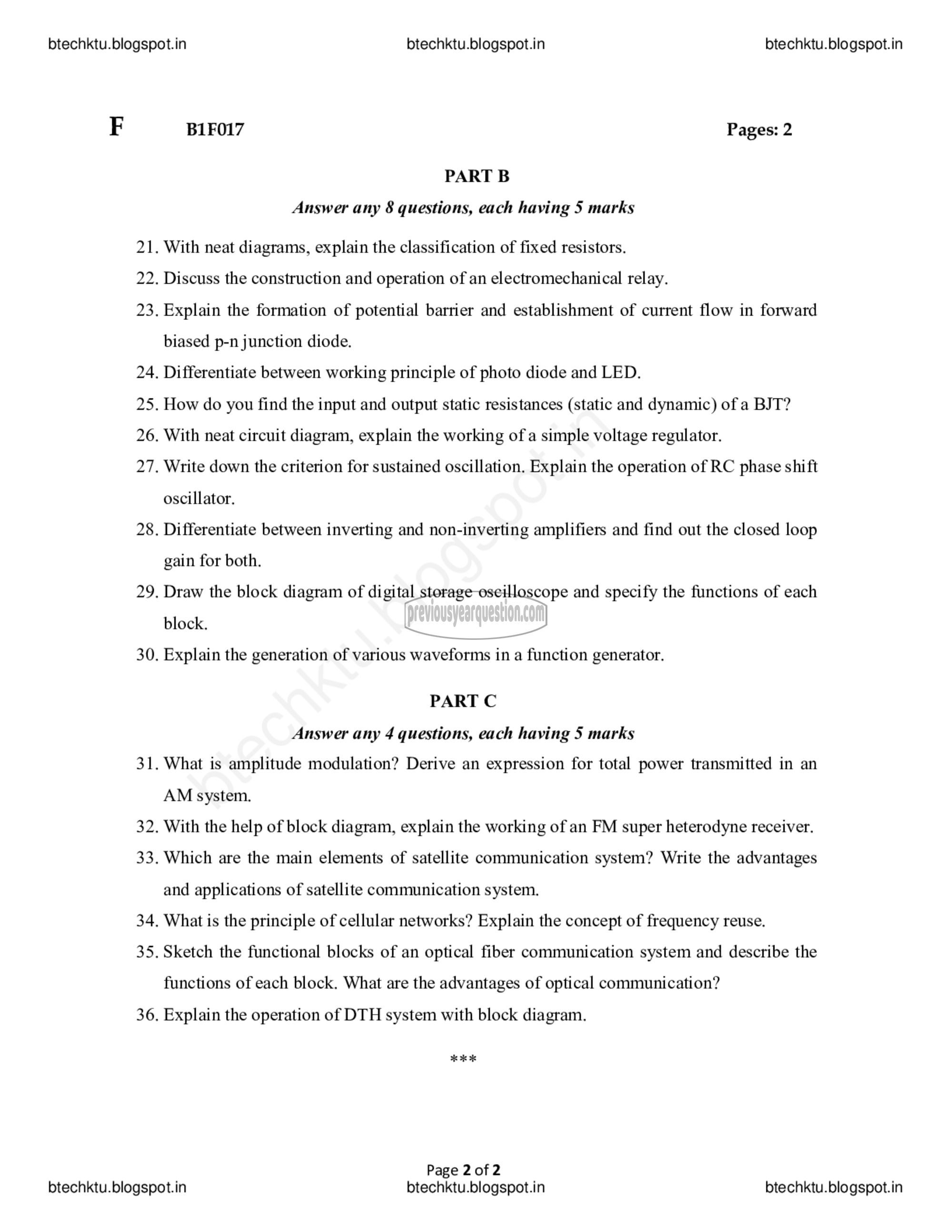APJ ABDUL KALAM TECHNOLOGICAL UNIVERSITY Previous Years Question Paper & Answer
Semester : S1 and S2
Subject : BASICS OF ELECTRONICS ENGINEERING
Year : 2017
Term : JANUARY
Branch : MECHANICAL ENGINEERING
Scheme : 2015 Full Time
Course Code : EC 100
Page:2
btechktu.blogspot.in btechktu.blogspot.in btechktu.blogspot.in
F
21
24.
25.
26.
27.
28.
29.
30.
31,
32.
33,
34.
35.
36.
btechktu.blogspot.in btechktu.blogspot.in btechktu.blogspot.in
13117017 Pages: 2
PART 8
Answer any 8 questions, each having 5 marks
. With neat diagrams, explain the classification of fixed resistors.
22.
23.
Discuss the construction and operation of an electromechanical relay.
Explain the formation of potential barrier and establishment of current flow in forward
biased p-n junction diode.
Differentiate between working principle of photo diode and LED.
How do you find the input and output static resistances (static and dynamic) of a BJT?
With neat circuit diagram, explain the working of a simple voltage regulator.
Write down the criterion for sustained oscillation. Explain the operation of RC phase shift
oscillator.
Differentiate between inverting and non-inverting amplifiers and find out the closed loop
gain for both.
Draw the block diagram of digital storage oscilloscope and specify the functions of each
block.
Explain the generation of various waveforms in a function generator.
PART C
Answer any 4 questions, each having 5 marks
What is amplitude modulation? Derive an expression for total power transmitted in an
AM system,
With the help of block diagram, explain the working of an FM super heterodyne receiver.
Which are the main elements of satellite communication system? Write the advantages
and applications of satellite communication system.
What is the principle of cellular networks? Explain the concept of frequency reuse.
Sketch the functional blocks of an optical fiber communication system and describe the
functions of each block. What are the advantages of optical communication?
Explain the operation of DTH system with block diagram.
aK
Page 2 of 2
